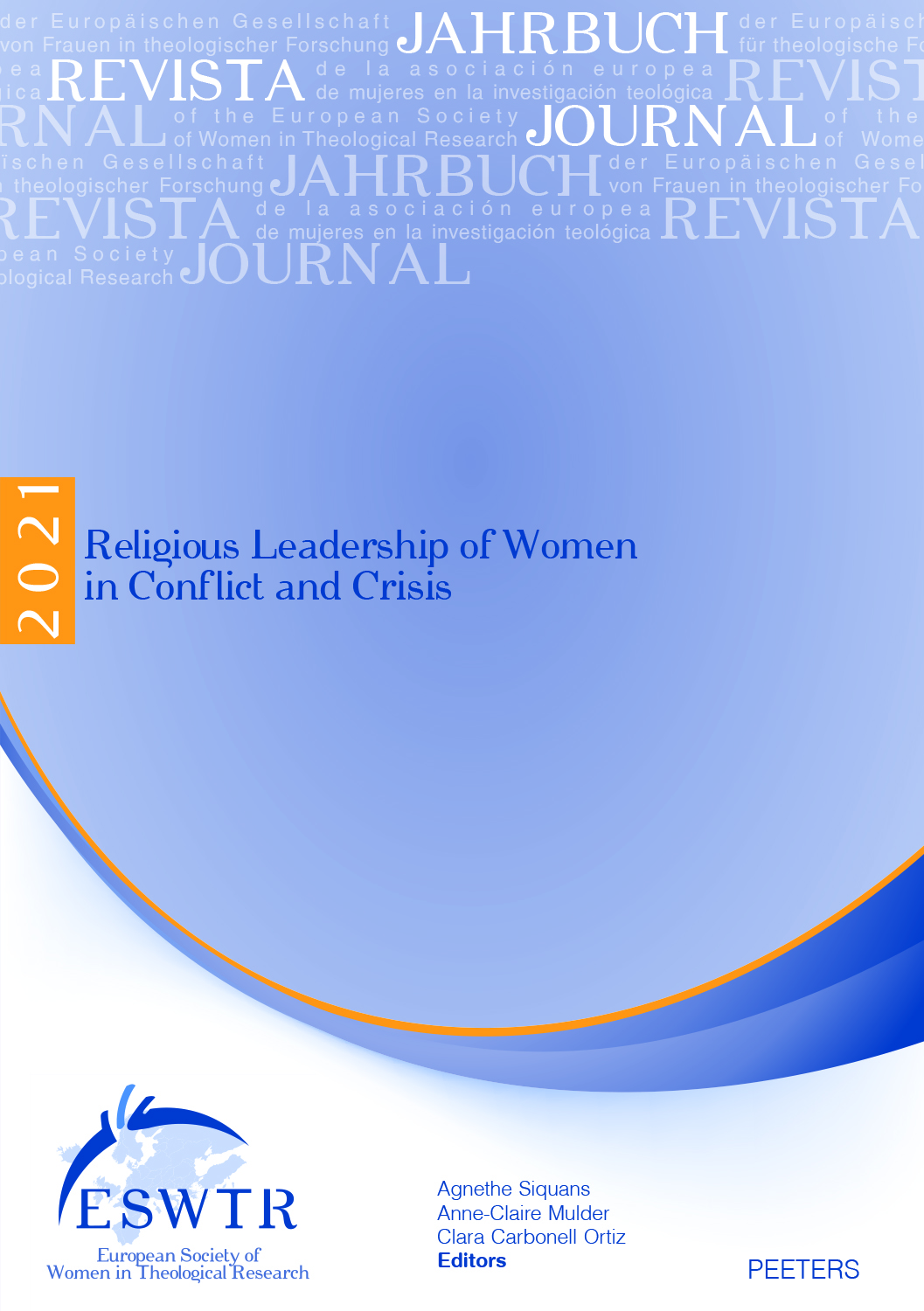 previous article in this issue previous article in this issue | next article in this issue  |

Preview first page |
Document Details : Title: Heilige Texte, Körpersprache und die Autorität weiblicher Prophetie und Mystik Author(s): VALERIO, Adriana Journal: Journal of the European Society of Women in Theological Research Volume: 12 Date: 2004 Pages: 53-66 DOI: 10.2143/ESWTR.12.0.583247 Abstract : The article discusses the different ways in which the female body is connected to mysticism, prophecy and the practice of public speaking (both in preaching and in the juridical sphere). In mysticism, a traditional sphere for women, the body is annihilated and almost emptied of its proper biological functions. It becomes empty in order that it may be filled and made fruitful by God. In prophecy, the female body assumes the male characteristic of strength and with it – sometimes – the inner or outward appearance of masculinity. In public speaking, we observe how the female body transforms itself, changing voice and donning male clothes. These cases show how female body as denied or masked: they illustrate the failure of femininity in the sphere of the sacred. Domenica Narducci da Paradiso (1473-1553) was an Italian mystic, prophetess and preacher of Renaissance. She preaches with a “female body”, and derives the justification of her own public role from Scripture. This is no juridical munus, but rather a prophetic vocation which is mediated through the interpretation of Holy Scripture. To give more dignity to the human body, a shared point between Holy Scripture, theological anthropology (imago Dei) and Human Rights must be found. L’article montre quelles différentes fonctions relient le corps féminin à la mystique, à la prophétie et à la pratique du discours public (sermon, prêche ou domaine juridique). Dans la mystique, un domaine traditionnel des femmes, le corps s’efface et est en grande partie vidé de ses fonctions biologiques. Il est vide, parce qu’il doit être rempli et fécondé par Dieu. Dans la prophétie, le corps féminin prend le caractère masculin de la force et parfois aussi l’apparence intérieure ou extérieure de la masculinité. Dans le discours public, on peut observer que le corps féminin se transforme, que la voix change et que des vêtements masculins sont revêtus. Ces cas montrent toujours un corps féminin renié ou déguisé, ce qui fait échouer la féminité dans le domaine du sacré. Domenica Narducci da Paradiso (1473-1553), mystique, prophète et prédicatrice de la Renaissance italienne, prêche avec un “corps féminin” et tire de l’Écriture les arguments pour la légitimation du rôle qu’elle a à assumer en public. Ce n’est pas un munusjuridique, mais bien une vocation prophétique que veut faire passer cette large interprétation des Écritures Saintes. Afin de donner plus de dignité au corps féminin, il faut trouver un point commun entre les Écritures Saintes, l’anthropologie théologique (imago Dei) et les droits de l’homme. |
 |


